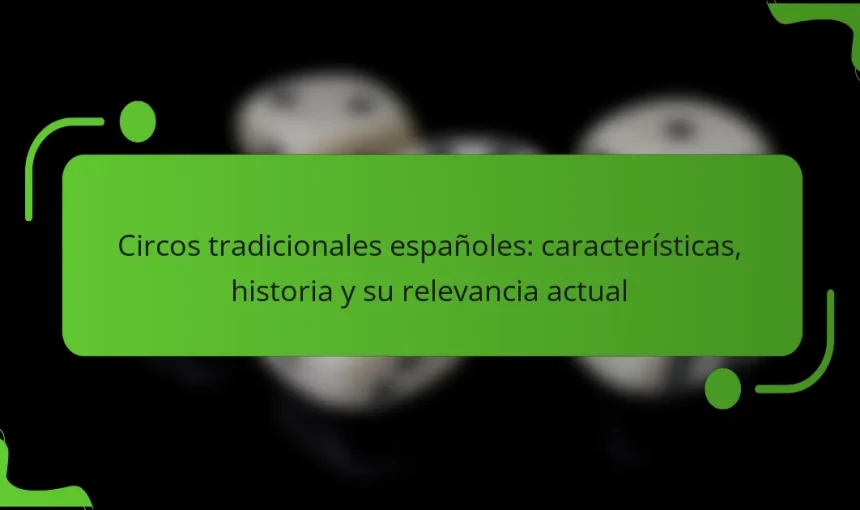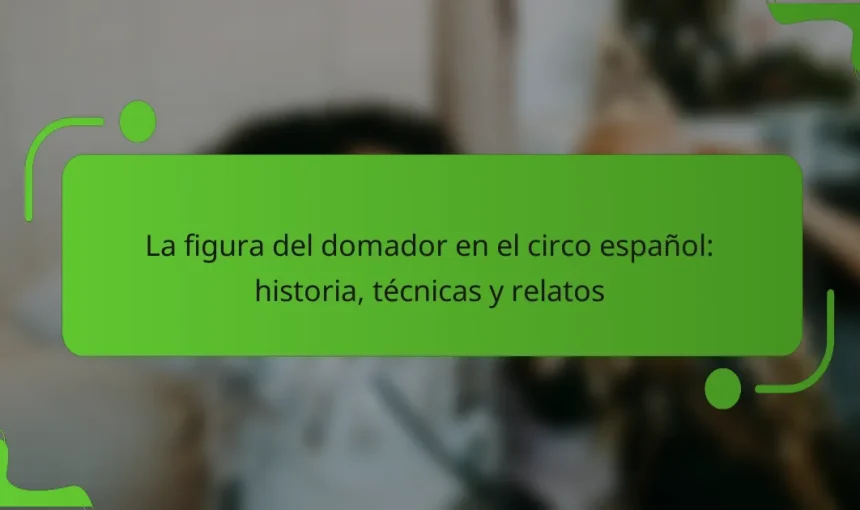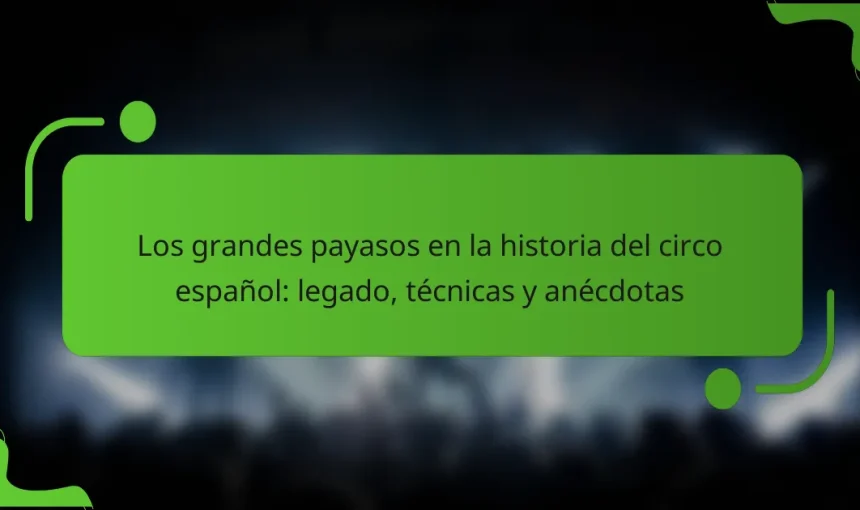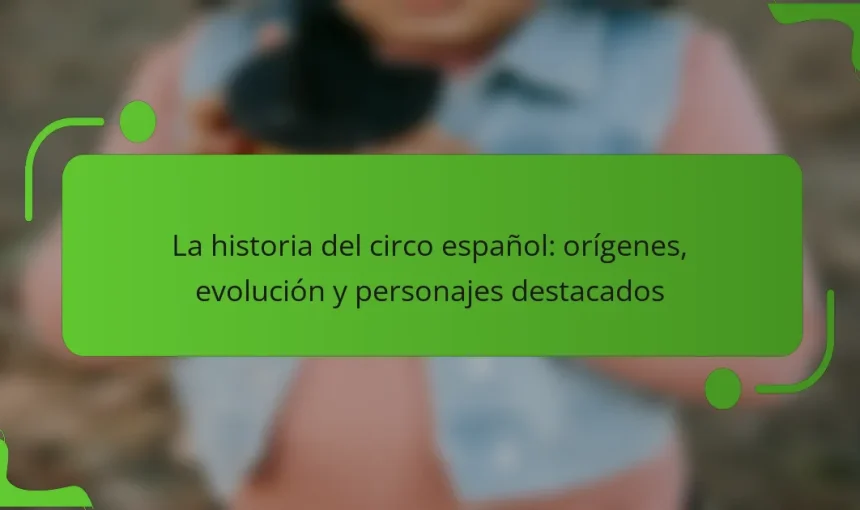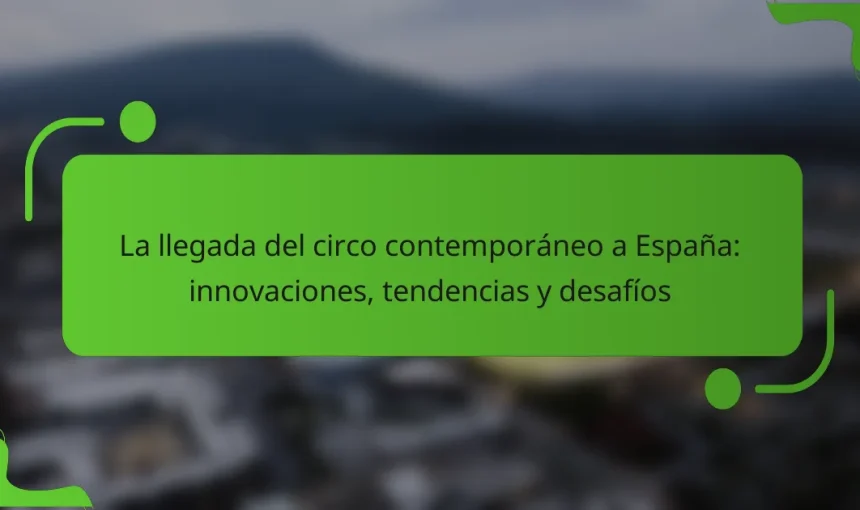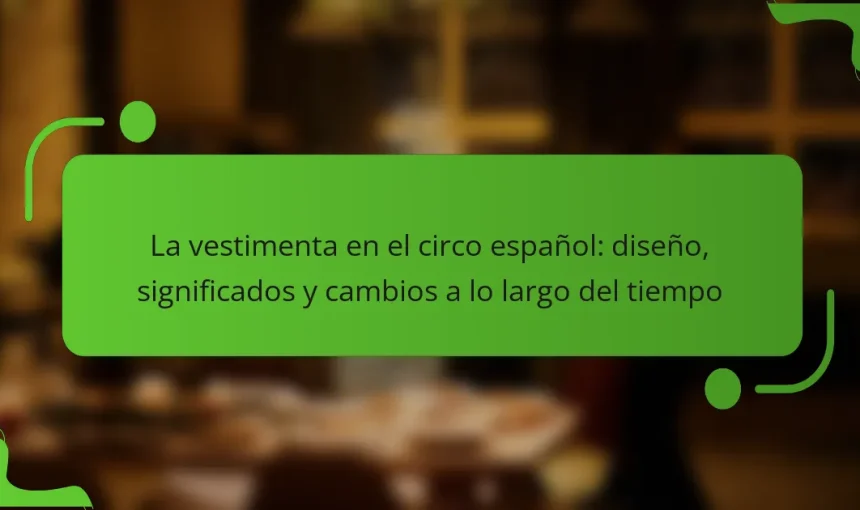Spanish traditional circuses are itinerant shows that blend acrobatics, juggling, and animal performances, playing a significant role in Spanish culture since the 19th century. Typically featuring a large tent, these circuses showcase skilled artists, known as “circenses,” who perform various acts, including contortion and magic. Recently, Spanish traditional circuses have evolved by adapting to new […]
The article explores the role of the domador, or animal trainer, in Spanish circus culture, highlighting its historical significance and the techniques employed in training wild animals such as lions and tigers. It details the skills required for effective interaction with these animals, emphasizing the importance of discipline and respect. The piece also addresses the […]
The article focuses on Spanish circus music, an essential element that enhances performances by creating atmosphere and engaging the audience. It highlights the contributions of notable composers such as José Padilla, Francisco Alonso, and Manuel García, who have shaped the genre with their iconic pieces. The evolution of Spanish circus music from its origins in […]
Acrobacias en el circo español are physical performances characterized by skills in balance, strength, and agility, encompassing various forms such as jumps, flips, and spins. This article explores the evolution of these acrobatic acts within the Spanish circus tradition, highlighting iconic artists and diverse styles that have emerged over time. The significance of acrobatics in […]
¿Qué son los circos tradicionales españoles? Los circos tradicionales españoles son espectáculos itinerantes que combinan acrobacias, malabarismos y actuaciones de animales. Estos circos han sido una parte importante de la cultura española desde el siglo XIX. En su formato clásico, presentan una carpa grande donde se realizan diversas actuaciones. Los artistas, conocidos como “circenses”, suelen […]
The article focuses on prominent clowns in the history of Spanish circus, highlighting iconic figures such as Miliki, Fofó, and Gabi. These clowns not only entertained audiences but also left a lasting impact on Spanish popular culture through their unique blend of music, comedy, and visual performance. Key techniques employed by these clowns include slapstick […]
The article explores the history of Spanish circus, tracing its origins back to the 18th century when the first circus companies emerged, showcasing acrobatics, juggling, and animal acts. It highlights the evolution of the circus in the 19th century, where it became a popular form of entertainment, introducing iconic figures like clowns and trapeze artists […]
¿Qué es el circo contemporáneo y cómo llegó a España? El circo contemporáneo es una forma de arte escénico que combina acrobacias, teatro y elementos visuales innovadores. Se diferencia del circo tradicional al enfocarse en la narrativa y la expresión artística. Este estilo de circo llegó a España en la década de 1980. Influencias de […]
The article explores the evolution of magic within the Spanish circus, highlighting its origins in the 19th century and the integration of magical acts into circus performances. Notable magicians, such as the “Mago de la Luz,” played a significant role in popularizing magic, which became a core component of circus entertainment. The article details iconic […]
The article focuses on the clothing worn in Spanish circuses, highlighting its role in defining the identity of performers. It explores the vibrant and creative nature of circus costumes, which not only reflect the personalities of characters like clowns and acrobats but also carry cultural significance. The discussion includes current trends in circus attire, such […]
